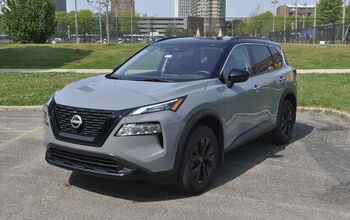Honeywell Calls U.S. Emerging Market. For Turbochargers

How do you goose fuel economy? Lower the cubic inches. Then add a little blow. Honeywell hopes that usage of turbochargers will double in new U.S. automobiles by 2015, “as tighter fuel economy standards foster an emerging market,” writes Bloomberg. The U.S. has among the lowest turbo use in the world, making it an “emerging region from a turbo standpoint,” Alex Ismail, head of Honeywell’s transportation systems division, said.
As far as turbos go, the U.S. is a third world country. Only 9 percent of new cars sold in the U.S. have a blower. In Europe, it is 67 percent, in India 28 percent, and 13 percent in China.
Turbos can boost manufacturers’ efforts to meet new CAFE standards by 2016. Ford plans to equip 90 percent of its North American models with turbocharged EcoBoost engines by 2013.

Bertel Schmitt comes back to journalism after taking a 35 year break in advertising and marketing. He ran and owned advertising agencies in Duesseldorf, Germany, and New York City. Volkswagen A.G. was Bertel's most important corporate account. Schmitt's advertising and marketing career touched many corners of the industry with a special focus on automotive products and services. Since 2004, he lives in Japan and China with his wife <a href="http://www.tomokoandbertel.com"> Tomoko </a>. Bertel Schmitt is a founding board member of the <a href="http://www.offshoresuperseries.com"> Offshore Super Series </a>, an American offshore powerboat racing organization. He is co-owner of the racing team Typhoon.
More by Bertel Schmitt

































Comments
Join the conversation
To be fair, both the turbo, and the CVT in my 2003 Audi A4 "worked fine" Looking through my records this morning I see the oil was changed about every 2500 miles.
Adding complexity adds additional failure pathways. To offset this added complexity the additional components must make the existing components more reliable, for example, by taking some operating stress off of them. I cannot see how adding a turbocharger accomplishes this. In fact it would seem to add stress to existing components, for example, by raising underhood temperatures. (See the final generation RX-7 for an example of this). As a general principle, in the overall cost of ownership equation complexity ultimately hurts. Note that I am not saying that turbos aren't cool technology, that they aren't fun to drive, that they aren't a selling point to the consumer. I am saying that for every gizmo you add (which is necessary to operate the car) the greater your chance for a dealer visit down the road. The cost of a dealer visit negates the cost savings of a more fuel efficient vehicle.
Oil "cooking" is called "coking" and is more an issue with the non-water cooled turbos from the bygone eras. Routine and diligent maintenance, however, goes a long way for turbo longevity. Nissan turbo-charged their 1981 to 1983 280zx and there are many examples with 250,000+ miles on the original engine and turbo. Idling after highway cruising is silly. The intake manifold is under vacuum during cruise and the wastegate is open. This allows the exhaust gases to by-pass the exhaust turbine and therefore not develop boost. Idling after a spirited run is recommended run before shut-down only if you have not had a chance to simply cruise. Your engine runs cooler when driving than when idling. My 2006 WRX has 95,000 miles without a single issue and there are many drivers with over 200,000 miles. VW does a great job with their turbo-charged engines. They do get the fuel economy of a 4-cylinder with the power of a 6-cylinder. Subaru, on the other hand, gets the fuel economy of an 8-cylinder with the power of a 4-cylinder (considering that many modern V-6s are up to 300 hp now).
Looking over the manual to my recently purchased used Volvo C30 shows why the T5 doesn't fail: 6 quarts of oil... in a 5 cylinder 2.5l engine. That is the same amount as the 8 cylinder 4.7l in my Dodge Dakota! Seems Volvo knows a thing or two about turbos.